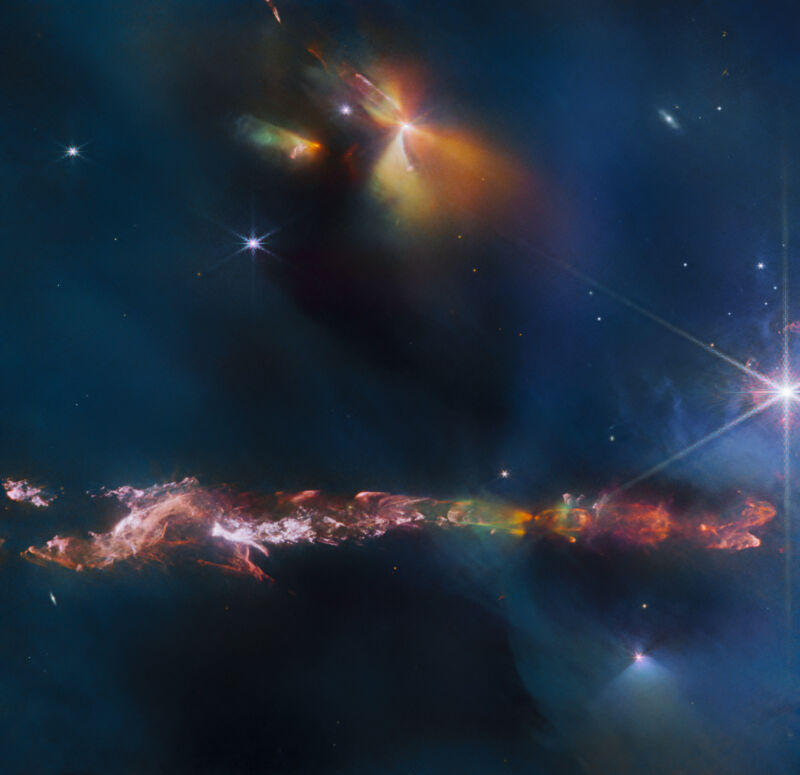
Good morning. It's December 6, and today's image features a stunning outflow from a double star about 1,000 light-years from Earth.
The James Webb Space Telescope captured this photograph and provides unprecedented detail of Herbig Haro object number 797. Such objects are luminous regions surrounding newborn stars and are formed when stellar winds or jets of gas spewing from these protostars form shockwaves colliding with nearby gas and dust at high speeds.
In this case—previously unknown to astronomers—the source of these spectacular jets is not one but two stars, which can be seen on the right-hand side of the image. Other outflows are also seen in this image, including one from the protostar in the top of the image, with its illuminated cavity walls.
These objects are in the wheelhouse of the infrared capabilities of the Webb telescope. Molecules in the outflows from the young stars are excited by the turbulent conditions and emit infrared light that Webb can collect to visualize the structure of the outflows. These molecules are heated to temperatures of thousands of degrees Celsius due to the shocks.
Space is pretty ace if you ask me.
Source: ESA/Webb, NASA & CSA, T. Ray (Dublin Institute for Advanced Studies)



3175x175(CURRENT).thumb.jpg.b05acc060982b36f5891ba728e6d953c.jpg)
Recommended Comments
There are no comments to display.
Join the conversation
You can post now and register later. If you have an account, sign in now to post with your account.
Note: Your post will require moderator approval before it will be visible.